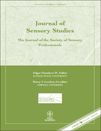EFFECT OF INFORMATION ABOUT PIG BREED ON CONSUMERS' ACCEPTABILITY OF DRY SAUSAGE
Abstract
ABSTRACT
This research examined the influence of information about a particular pig breed (Black Slavonian pig breed [BSB], compared to modern white breeds [MWB]), with respect to the consumer acceptability of traditional kulen sausage. Hedonic evaluations of two kulen samples were elicited from 100 consumers, under both blind and informed tasting conditions. Additionally, consumers reported their quality expectations of BSB and MWB kulen.
An expectancy test revealed higher quality expectations of BSB kulen compared to MWB kulen. The share of respondents preferring BSB kulen in a blind test was significantly lower than that in the expectancy test (negative disconfirmation), while consumers found MWB kulen tasted better than expected (positive disconfirmation). Providing information about the particular pig breed affected preferences positively toward BSB and negatively toward MWB kulen. However, the assimilation of information was complete for MWB, but not for BSB kulen, implying that, apart from extrinsic cues, intrinsic cues have an impact on actual (informed) preferences for kulen sausage.
PRACTICAL APPLICATIONS
Consumers are paying increased attention to the quality of food and becoming more sensitive to information about products they consume. Results of this study confirm that information about pig breeds and implied traditional value can significantly influence consumers' expectations and therefore can be used as a differentiation tool in marketing of traditional meat products.




